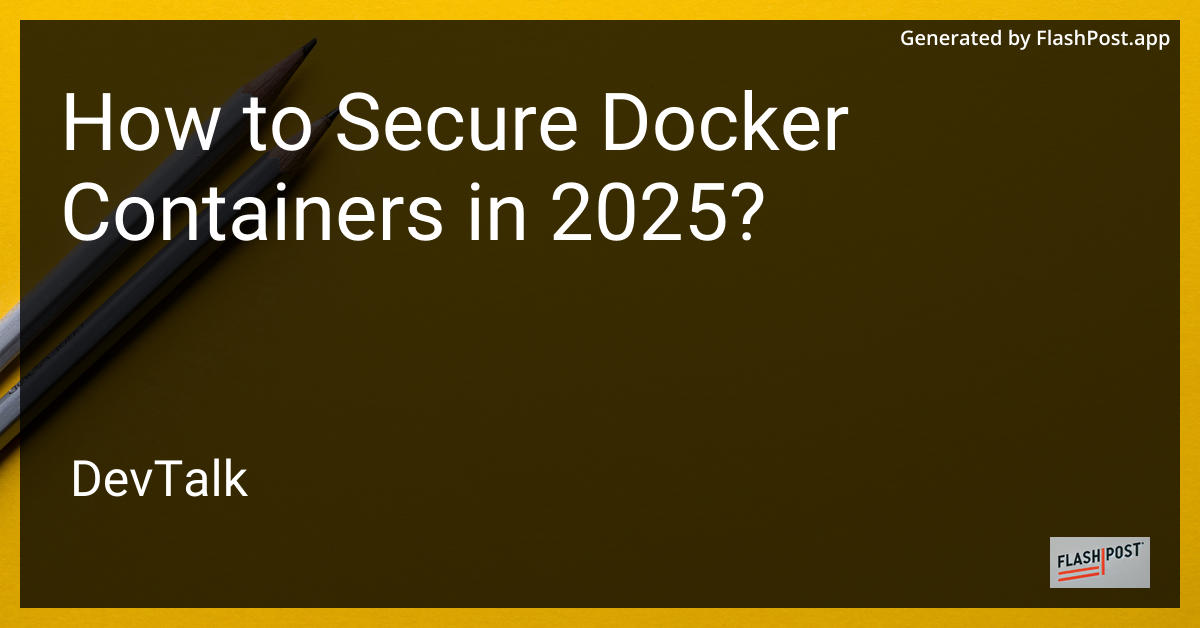How to Secure Docker Containers in 2025?

How to Secure Docker Containers in 2025: Best Practices and Tips
In today's digital age, securing Docker containers is more crucial than ever.
With the continuous evolution of technology and the increasing threat landscape, ensuring that your containerized applications are secure is a top priority. As we look towards 2025, let's explore some best practices and tips to secure Docker containers effectively.
1. Use Minimal Base Images
Start by selecting minimal base images to reduce the attack surface. Lightweight images have fewer packages and thus fewer potential vulnerabilities. Consider using trusted sources like official Docker images and keep them updated.
2. Implement Principle of Least Privilege
When configuring your Docker containers, apply the principle of least privilege. Ensure that containers have only the necessary permissions needed to function. Avoid running containers as the root user unless absolutely necessary.
3. Regularly Update and Patch Containers
Stay ahead of vulnerabilities by keeping your Docker images updated. Regularly pull the latest images and apply patches to your running containers. Automation tools can help in managing updates efficiently.
4. Network Security
Use Docker's networking capabilities to isolate containers. Leverage tools such as Docker Compose to define and manage your application networks. Securing networks ensures that containers can only communicate with services that are necessary.
5. Scan Images for Vulnerabilities
Incorporate vulnerability scanning tools within your CI/CD pipeline to identify risks in your Docker images. Tools like Clair, Trivy, and Anchore provide detailed reports on security vulnerabilities in containerized applications.
6. Manage Secrets Safely
Avoid hardcoding sensitive information in your images. Use Docker secrets or third-party tools like HashiCorp Vault to manage and inject sensitive information securely within your containers.
7. Employ Runtime Security
Deploy runtime security tools to monitor and protect running containers against malicious activities. Solutions like Falco and Aqua Security provide real-time threat detection and response capabilities.
8. Configure Resource Limits
Set resource limits on CPU and memory to each container to prevent resource hogging and potential DOS attacks. Use Docker's resource management features to define these constraints efficiently.
9. Secure API and Access
Always secure the Docker API with TLS to prevent unauthorized access. Regularly review access control policies to ensure only authorized users can interact with your Docker infrastructure.
10. Regular Security Audits and Logging
Conduct regular security audits of your Docker environment to identify potential weaknesses. Ensure detailed logging is enabled to record all actions and events within your Docker containers for analysis and audit purposes.
Additional Resources
-
How to Restart Nginx in Docker: Learn step-by-step methods to restart the Nginx server within your Docker containers to ensure proper configuration changes.
-
Docker Compose Redis: Discover how to efficiently run Redis within your Docker environment using Docker Compose YAML files for setup and configuration.
-
Docker Database Connection: Understand the process of establishing a secure and stable connection to your Dockerized Oracle database instance.
Securing Docker containers is an ongoing process that requires diligence and best practices. By implementing these strategies in 2025, you can enhance the security posture of your containerized workloads, ensuring greater resilience against the evolving threat landscape.
This markdown article is optimized for SEO with relevant keywords and provides crucial tips on securing Docker containers, while also linking to helpful resources that guide further operational queries.